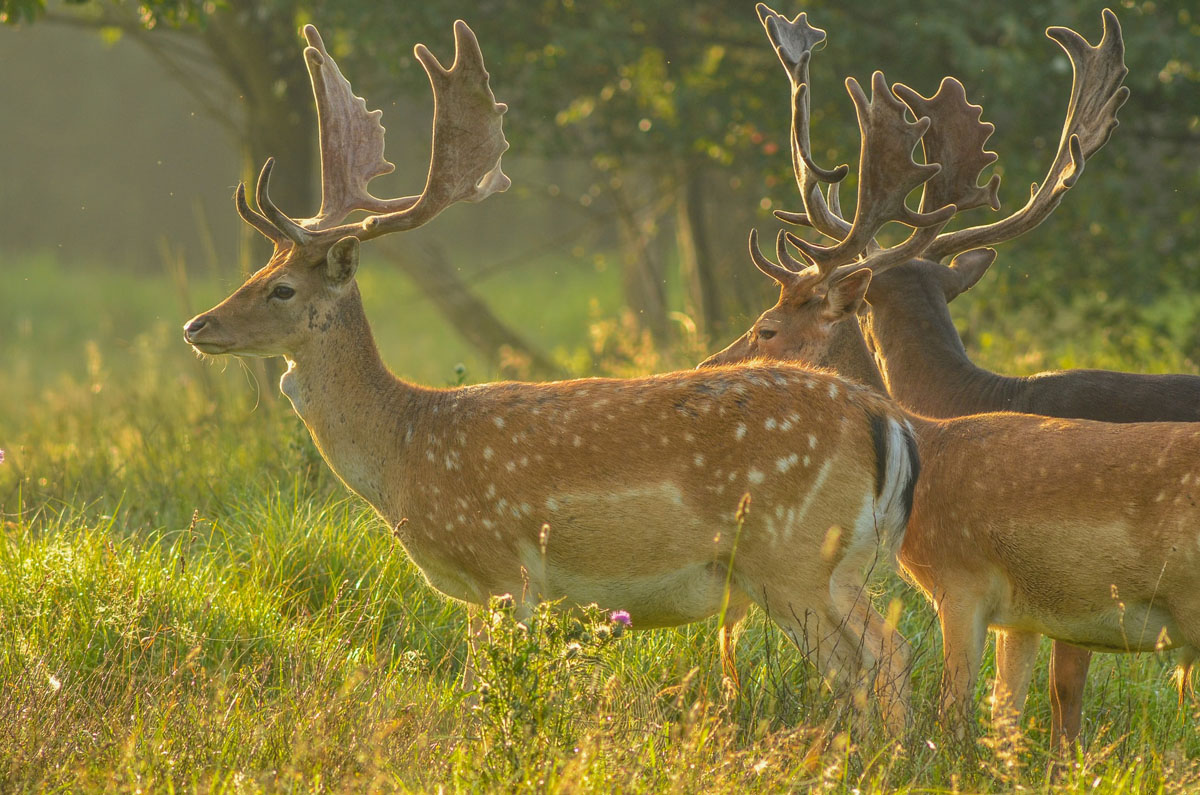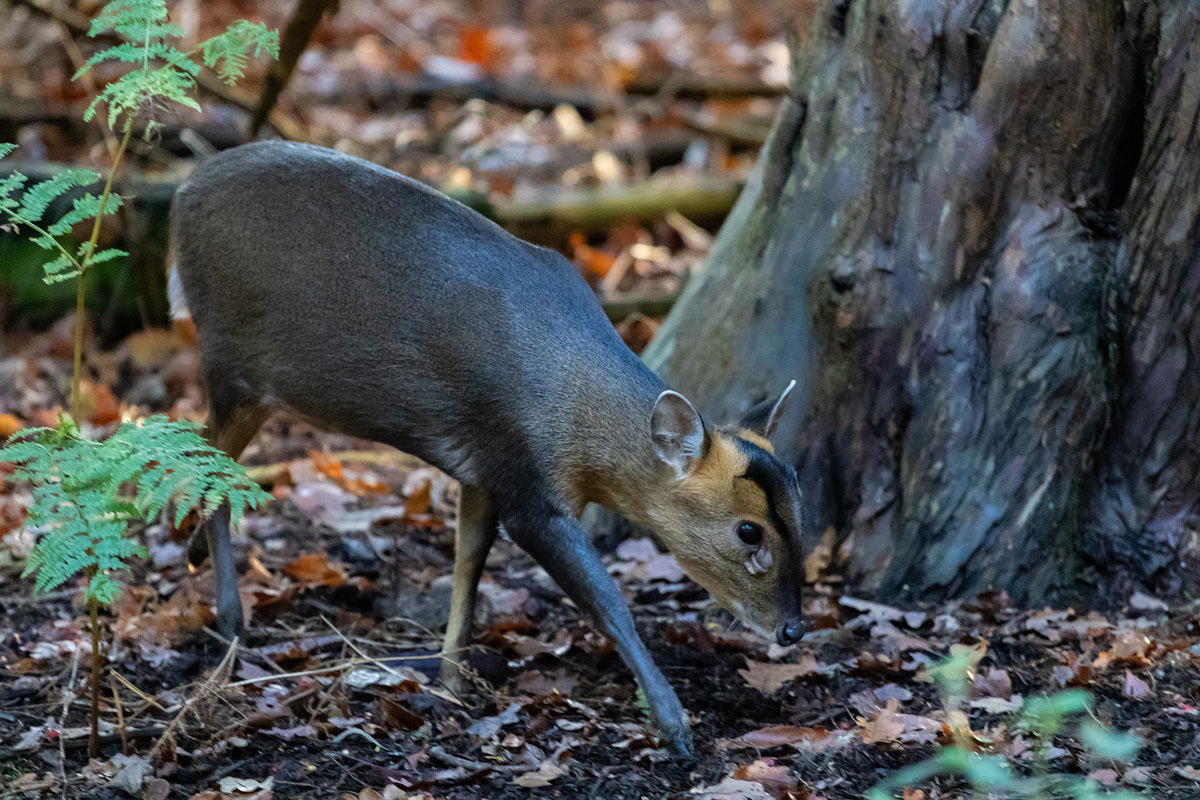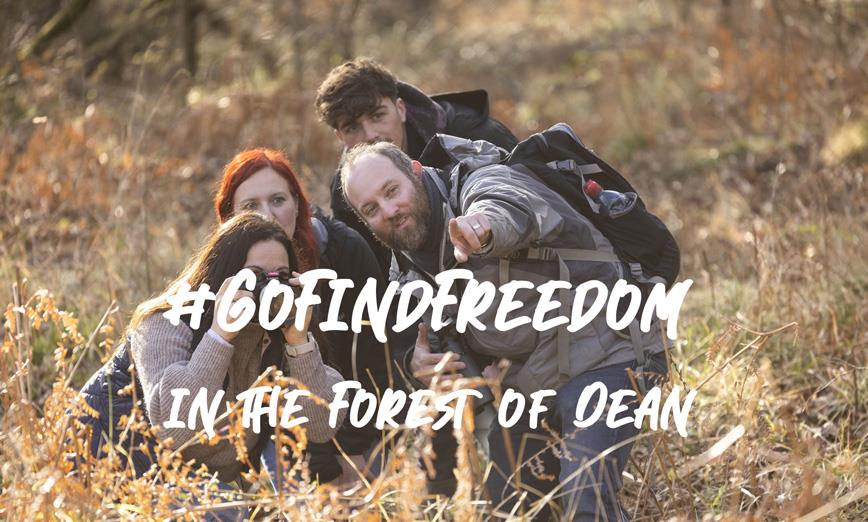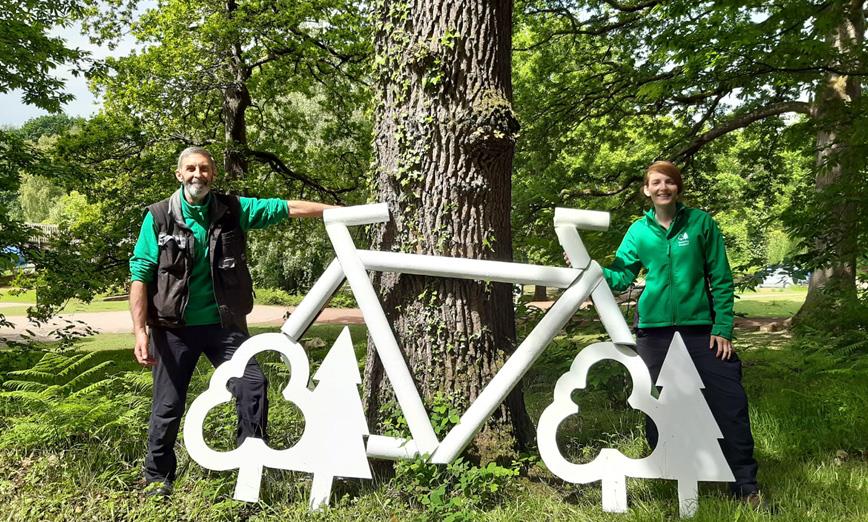My Planner
You are here: Explore > Nature & Wildlife > Deer
There are three species of deer to look out for in the Forest of Dean and Wye Valley: the fallow, roe and muntjac. The fallow, introduced during the Norman times, is the most commonly seen. It is a large deer often in small groups and with a distinctive black and white v-shaped tail and bottom. The muntjac, also an introduced species, is the size of a small dog and barks like one when it runs off, flashing its tail like a rabbit. The males have tusks which are used for fighting. The roe deer is native and most often seen on the outskirts of the forest and surrounding countryside. There are a few red deer on the edges of the Wye Valley although it is very rare to see them.
Seeing Deer in the Forest of Dean and Wye Valley
There is a good chance of seeing deer throughout the Forest of...Read More
There are three species of deer to look out for in the Forest of Dean and Wye Valley: the fallow, roe and muntjac. The fallow, introduced during the Norman times, is the most commonly seen. It is a large deer often in small groups and with a distinctive black and white v-shaped tail and bottom. The muntjac, also an introduced species, is the size of a small dog and barks like one when it runs off, flashing its tail like a rabbit. The males have tusks which are used for fighting. The roe deer is native and most often seen on the outskirts of the forest and surrounding countryside. There are a few red deer on the edges of the Wye Valley although it is very rare to see them.
Seeing Deer in the Forest of Dean and Wye Valley
There is a good chance of seeing deer throughout the Forest of Dean and Wye Valley, particularly once you move away from busy areas. When you go walking in the Forest you may be lucky enough to happen upon them.
Deer are shy animals, coming out mostly at dusk and during the night. If you spot a deer it will either run off barking or stay put hoping you haven't seen it. Quite often you can walk past them if you avoid direct eye contact. They can be seen along the edge of roads and sometimes in the middle of them! Male fallow deer (bucks) are bolder during their autumn rut when they sport huge antlers. Female fallow deer (does) can sometimes be seen with one or two young (fawns) in the spring and usually move around in female-led groups.

When walking through the Forest look out for their raisin-like poo and footprints, called slots, made by their hooves. There are over 2,000 deer in our area although you would never know.
It is worth slowing down when driving on forest roads at dawn, dusk and during the night as deer collisions are common, particularly in May, October and November.
The best time to hear deer is in autumn during the mating season when we can witness one of nature's great spectacles - the deer rut. Often you are more likely to hear it than see it though. The guttural grunt of the buck deep in the woods is quite something to hear when out walking, and could easily be mistaken for a wild boar grunt.
History of Deer in the Forest of Dean and Wye Valley
The Forest of Dean became a Royal hunting forest in Norman times. The last record of the monarch actually hunting in the Forest was 1256, but it continued to be an important source of venison for the Royal table for centuries. Since Norman times, the Dean has principally had herds of fallow deer. A few red deer were dumped in the Forest in the 20th century, but have since moved to the South West of the Forest and into the Wye Valley. Muntjac and roe deer have moved in from other areas but the fallow continues to be the main species.

Please be extra careful when driving through the Forest:
- Deer mostly come out at sunrise and dusk, please adjust your speed when driving at these times.
- Accidents involving deer peak in May, October and November.
- 'Deer' or 'wild animal' signs help warn you that you are in an area known for wildlife, please drive especially carefully there.
- A deer can appear almost instantly and the forest camouflage makes them hard to see plus they don't follow the green cross code!
- Use high beam headlights when it's dark, but dip them if you see a deer, otherwise it may freeze in your path. Don't dazzle other drivers though.
- If you see one deer, slow right down as there is almost always one or more to follow and they can cross the road in groups.
- If a deer appears suddenly it's safer to continue on your normal track rather than swerve or brake hard to try to avoid it. Sudden manoeuvres can result in a loss of control and increase the risk of hitting a tree or another vehicle.
- If you do hit a deer, report the accident to the police who will contact someone who can help the injured deer.
Experience a wildlife safari with naturalist and wildlife expert Ed Drewitt for the best chance of seeing deer in the Forest of Dean and Wye Valley.
Find out more about the deer you can see here from the British Deer Society here.
Read LessFind Out More About Our Wildlife
Find Your Freedom
- We have a wide range of wildlife here in the Forest of Dean and Wye Valley, including deer, boar and birds. Find out about the animals which live here and where you might be able to spot them on your visit.
- The Forest of Dean and Wye Valley is home to a huge variety of birds throughout the year. Some are resident and can be seen in great numbers while others come here for the spring and summer, or autumn and winter. The mosaic of woodland, heathland, bogs and mires, rivers and streams, farmland and grassland habitats provide a rich environment for birds, many of which are nationally rare.
- Boar were once common in the Forest of Dean and were hunted for food. In medieval times, boar from the Royal Forest were supplied for the king's table - there is a record of an order for 100 boars and sows for a Christmas feast in 1254.
- From the 20 million trees in the Forest of Dean to the 58 mile long Wye Valley AONB, our natural beauty, dramatic landscapes and plethora of flora and fauna are what make our area so unique. You can walk for miles along glorious paths and see a wide range of local plants, trees and animals.
- Our wildlife experiences and nature-based activities are of course abundant here in our ancient forest and wild river valley. Our countryside holds many treasures and we have a wide range of activities and experiences ideal for exploring and learning about our natural world. We have foraging and bushcraft experiences, wildlife safaris and birdsong walks, birds of prey and falconry experiences and much much more.
©Visit Dean Wye 2025. All Rights Reserved.
*Visit Dean Wye is the trading name of Forest of Dean & Wye Valley Tourism Limited.









